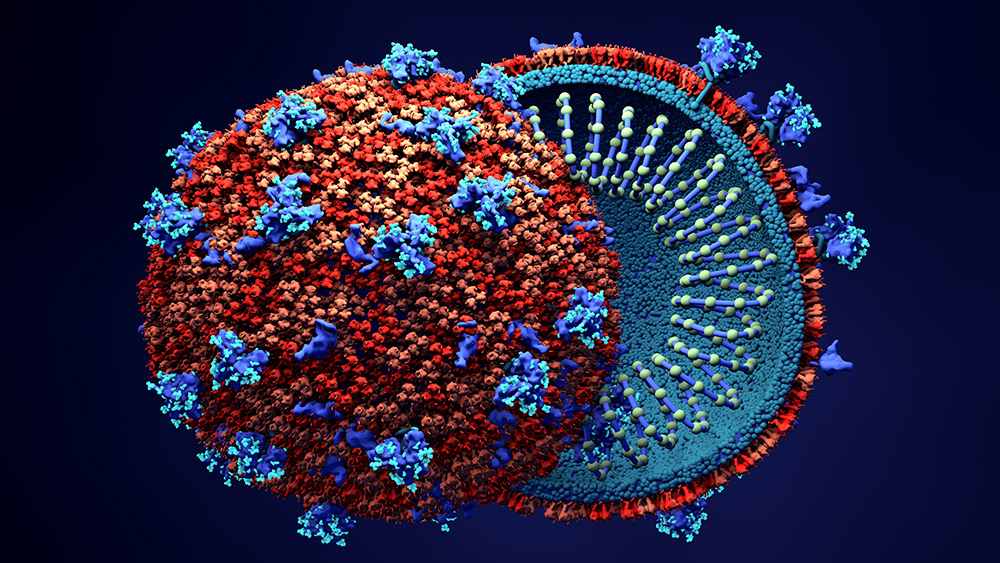Take a look at this: Staring into someone’s eyes for 10 minutes can cause hallucinations and “out-of-body” experiences
08/05/2020 / By Divina Ramirez

Strange things can happen by simply staring into someone else’s eyes for the better part of 10 minutes. According to Italian researcher Giovanni Caputo, this action can make people enter into an altered state of consciousness.
Caputo came about this bizarre finding after conducting a trial on 10 pairs of participants made to stare at each other’s eyes for 10 minutes. The participants had just enough light to pick up facial features but not color.
Based on the participants’ responses on the questionnaires, 90 percent of them reported seeing deformed facial traits in their partner’s face, 75 percent reported seeing monsters and 50 percent reported seeing aspects of their faces.
The frightening results: dissociation and hallucinations
The strange, single-blind experiment, described in the journal Psychiatry Research, involved 40 participants sorted into pairs. Caputo designated half as the control group and had the pairs in this group sit back-to-back, staring at a blank wall for 10 minutes.
The remaining half in the experimental group sat opposite each other positioned one meter apart in a dimly lit room. Caputo set the illumination to a level that still let the participants pick up fine facial features but not color.
Each participant then filled out three questionnaires after the trial. The first questionnaire tested for dissociation, the second asked if the participants thought their partners’ faces seemed different and the third explored perceived changes in their partner’s face.
Those in the control group did not report seeing nor feeling strange things, but the participants in the experimental group reported a number of disturbing experiences.
For instance, an incredible 90 percent of them reported seeing some deformed facial traits in their partners, and another 75 percent reported seeing a “monster,” according to a Reader’s Digest article on the trial.
Half of the participants, on the other hand, reported seeing their faces on their partners, and another 15 percent reported seeing a close family member.
Caputo speculates that the mind enters a dissociative state upon staring at something for a prolonged period, but he had been unable to provide a detailed explanation of the possible cognitive mechanisms involved.
At most, Caputo noted in his paper that the dissociation and hallucination that occurs during interpersonal gazing can involve different processes in the brain.
The unsettling “strange-face illusion”
This isn’t the first time that Caputo conducted a staring contest for his research. Back in 2010, Caputo recruited 50 participants and got each of them to gaze at their reflections in a mirror for 10 minutes.
As with his latest test, the participants in the 2010 test had just enough light for them to make out their facial features but not enough to distinguish colors. For most of them, it took less than one minute to start experiencing something disturbing.
In particular, the participants reported seeing their faces begin to change before the 10-minute mark, taking on the appearance of animals, monsters and deceased family members. Caputo dubbed this unsettling phenomenon the “strange-face illusion.”
In an article published online in Scientific American, neuroscientists Susana Martinez-Conde and Stephen Macknik offered a possible explanation for this strange phenomenon. Both of them are professors of ophthalmology, neurology and physiology at the State University of New York.
The duo cited the phenomenon called Troxler fading, coined by the philosopher Ignaz Troxler, in attempting to describe the dissociation and hallucination that the participants experienced.
This phenomenon describes the experience of seeing objects “fade” after a prolonged period of gazing at them. Martinez-Conde and Macknik explain that this is due to neural adaptation. This mechanism involves neurons decreasing or stopping their response to unchanging stimulation, such as in the case of staring at something for too long.
But once the target of interest has gone or the person’s gaze shifts, microscopic and involuntary eye movements called microsaccades can restore perception back to normal almost instantly.
Both the phenomenon of Troxler fading and the brain’s neural adaptation mechanism might explain Caputo’s strange-face illusion, according to the neuroscientists. (Related: Scientists discover neurons that remain “forever young” through life.)
Read the latest stories on neuroscience and psychology at Brain.news.
Sources include:
Tagged Under: biomedical research, brain function, brain health, cognition, cognitive abilities, futurescience, nervous system
RECENT NEWS & ARTICLES
COPYRIGHT © 2017 RESEARCH NEWS




















